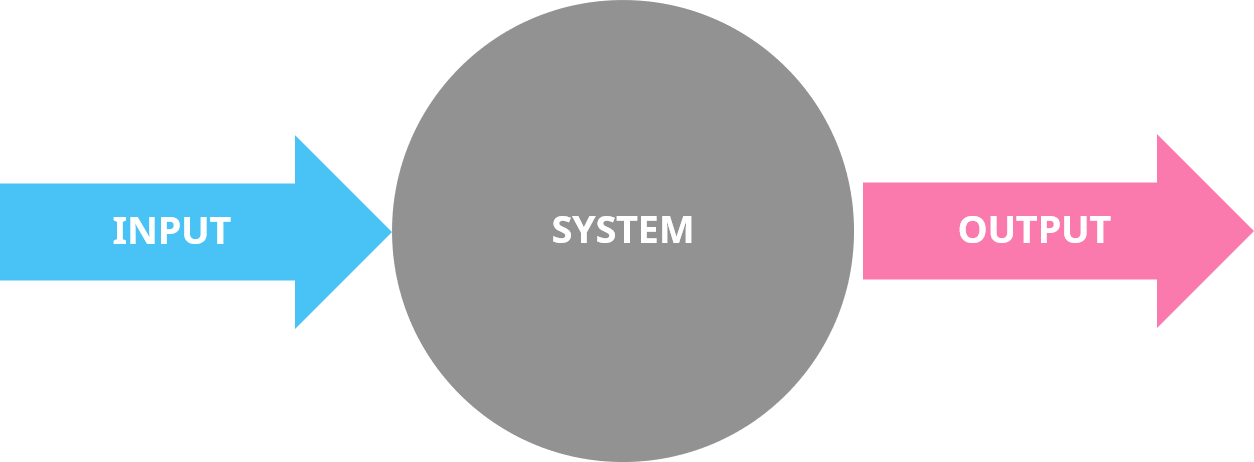7 Mistakes to Avoid when Measuring Innovation
Measuring innovation is one of the most ambiguous tasks when engaging in innovation management. Because of the complex nature of innovation, finding the right metrics is far from being simple.
What makes measuring innovation tricky is that seeing the real impacts of your innovation efforts takes time, and because each business and team is different, not all innovation metrics can be applied to everyone.

The purpose of all innovation metrics is the same: to gather data you can rely on when making decisions.
Because working with bad metrics leads to worse insight and eventually worse decisions, putting effort in finding the good ones should be a priority right from the start.
The fundamental question is: How to do it?
We’ve decided to turn the question around and elaborate on seven things what not to do – the most typical mistakes to avoid when measuring innovation.
Table of contents
- 1. Misalignment of innovation strategy and performance metrics
- 2. Different types of innovations are measured with identical metrics
- 3. Only measuring outputs and forgetting about inputs
- 4. Measuring too much
- 5. Not measuring enough
- 6. Lack of balance between qualitative metrics and quantitative metrics
- 7. Not keeping innovation KPIs up-to-date
- How to succeed?
- Infographic - How to measure innovation?
1. Misalignment of innovation strategy and performance metrics
Statistics show that “high-leverage innovators”, those who achieve more innovation with less resources, pay close attention to aligning business objectives with their innovation strategy. Despite the success stories, this is still something many organizations fail to do.
The number one reason for this is that strategy is often treated as a separate, high level plan and is not very well linked to the actual ways of working.
In fact, this seems to be a problem for surprisingly many, as according to the McKinsey survey, only 41% of the respondents agree that their innovation metrics are effectively aligned with employees’ performance incentives.
Target metrics have a massive impact on motivation and behavior, you want to avoid making the mistake of accidentally directing your employee’s attention to things that do not advance your innovation strategy.
Instead, you do want to make sure that your short-term and long-term innovation goals support your strategic objectives and that your individual performance metrics help make more innovation happen.
To do that, find answers to the following questions:
- What are your strategic goals?
- How does innovation support the overall objectives?
- What should be done to achieve these goals?
- Which metrics should be used to measure progress on all levels of the organization?
2. Different types of innovations are measured with identical metrics
Another typical mistake when selecting innovation metrics is to overlook the nature and maturity of your business and innovations.
Although it’s obvious that different types of innovations in different stages of the innovation funnel should be measured with individual metrics, it’s often easier said than done.
For example, the progress of incremental innovations is often quite easy to measure because you only have to measure changes. As such, the effects of these incremental improvements are often relatively straightforward and easy to compare to the previous results.
However, disruptive innovations are quite the opposite.
Many people are following disruptive technologies closely as they're expected to have great potential.
However, because disruptive innovation initially caters to a small and not-very-profitable customer base with low margins and plenty of risk, measuring the true potential of disruptive innovation is notoriously difficult.

As such, people can easily be disappointed if the potential doesn’t materialize as fast as expected.
We can learn a lesson from Kodak that used to dominate the photographic film market decades ago before it got disrupted by new technology.
In Kodak’s case, it faced a classic case of innovator’s dilemma, and eventually ended up making wrong choices by trying to optimize their offering by adapting new technology to the existing product portfolio.
By focusing too much on optimization and measuring ROI, not only did it limit itself to what already exists but completely failed to create something new and transformational.
So, when it comes to innovations in the beginning of their life cycle, traditional outcome metrics, such as product performance or profitability, might not always give a realistic overview of the true potential of an innovation.
Instead, you should carefully assess the nature and maturity of an innovation to be able to make relevant conclusions.
3. Only measuring outputs and forgetting about inputs
The third mistake is actually closely related to the previous point. Typically, people tend to be keener on measuring innovation outputs, as opposed to inputs.

To clarify these two, input metrics focus on measuring the investments, such as different resources and capabilities invested in an innovation system or process, whereas output metrics refer to the metrics that measure the outcome of these investments.
The problem with outcome metrics, such as ROI of innovation, is that that these types of metrics typically only provide a rear-view mirror perspective on innovation. Because outcome metrics look back at how things have been in the past, they usually aren’t very actionable.
Also, because innovation investments often take quite some time to turn into gold, hoping for great results early on may turn out to be demotivating. In addition, the biggest problems with “non-actionable” metrics are that they don't really help you to understand why the results are good or bad, or how to address those concerns.
For example, to measure the effectiveness of your entire innovation management process, you might want to measure more than just the revenue from new products. You can, for example, measure the average turnaround times and success rates.
So, the best way to make sure that you’re really doing enough of the right things that actually help you get where you want to be, is to constantly measure your progress and keep a balance between input and output metrics.
4. Measuring too much
Finding a suitable amount of metrics might be confusing as there are tons of different ones to choose from, most of which have some merit to them.
Therefore, it’s easy to make the mistake of measuring too much at once.

Having too many KPIs requires you to constantly keep track of numerous things, and, most of the time, isn’t worth the effort.
In addition, too many individual measures will only lead to confusion and frustration, which eventually puts people in the position where they don’t know what to focus on.
With too many metrics, not only you’ll have to spend a lot of time on tracking your progress, you’ll also focus on things that aren’t necessary. So, instead of using tons of different metrics to measure innovation, try to identify a few key ones that are the most important for your success.
5. Not measuring enough
Even though it’s not ideal to have too much to measure, so is not having too few metrics. With just a few metrics, it’s easy to neglect important aspects of your innovation work. This can easily result in a limited and distorted overview of things.
Therefore, it is essential to be able to make actual decisions based on your indicators to see what works, what doesn’t and why. This is unlikely to happen with just one metric, which is why finding a balance between different types of metrics is a good rule of thumb.
"If you don’t collect any metrics, you’re flying blind. If you collect and focus on too many, they may be obstructing your field of view.” ― Scott M. Graffius
6. Lack of balance between qualitative metrics and quantitative metrics
Let’s admit it, it’s a lot easier to come up with quantitative metrics than it is to measure the quality of new innovations and concepts.
However, measuring the amount of new ideas or patents filed doesn’t say much about how good these ideas are or how attractive and profitable your innovations are in practice.
If we look at a huge company like IBM, the number of new patents can be a relevant metric to measure progress on the company level. As we’ve seen in their case, however, this alone won’t guarantee business performance.
Thus, it’s important to also measure more qualitative aspects, such as customer satisfaction, retention rate or usability to gather valuable knowledge of how well the products actually perform, and even more importantly, how to improve them.

Although it’s important to be able to tell how many ideas you’re currently having in your innovation pipeline and how fast they’re being developed and move from one stage to another, paying attention to gathering relevant information about the quality of your ideas and whether your customers get real value from your products is equally important.
Having enough of innovations (patented or not) is one thing. Having enough of those that truly create value for the customer is something different.
7. Not keeping innovation KPIs up-to-date
Getting content with the metrics you’ve already selected is easy. However, as your business and innovation processes evolve, so should your metrics.
In order to be able to react to changes in a timely manner and to manage your innovation processes correctly, one must make sure that the metrics are relevant and up-to-date.
As you learn more about how your metrics work in reality, you’ll be able to do regular checks and see whether your KPIs are still taking you to the right direction.
When revisiting and updating your metrics, it’s still essential to be able to answer some of the fundamental questions about your strategic goals and measure the progress on all levels of your organization.
So, keep the big picture in mind when assessing your innovation metrics, because the metrics that worked well in the past might not be applicable in the future.
How to succeed?
Often when trying to find ways to succeed, it’s smart to list things that might be standing on your way. Once you’re able to identify and avoid some of the most common bottlenecks, you’ll be one step closer to choosing a set of metrics that will help you to make better decisions in the future.
Being selective and keeping a balance between different types of metrics is a great start. You should, however, also keep in mind that while some metrics work well for others, they might not necessarily work for you.
Try to experiment and see which activities have the strongest correlation and contribution to intended results and update your set of metrics once you learn what works and what doesn’t.
Whatever you decide to do, make sure you’re able to perform better on the basis of these metrics and use them to support your decisions. Also, give your ideas and innovations enough time to breath and don’t worry if your metrics aren’t perfect from the get-go as innovation is, after all, just a continuous learning process.

We've made a simple infographic to help you get started with measuring innovation. If you found this post useful, you can get the infographic by clicking on the link below.
This article was originally published on Innovationmanagement.se, which brings you insightful content to advance knowledge and strategies in the field of innovation management.




